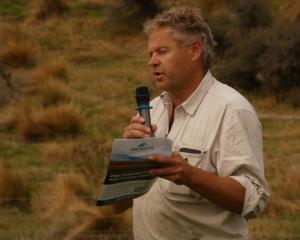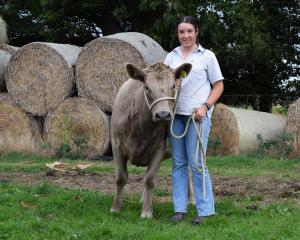
August 16, 2020, was a momentous day for Clinton sheep farmer Amy Blaikie and her family. They got themselves to the steps of the Beehive and presented a petition of 15,069 signatures to the House of Representatives. The petition requested that all publicly-funded buildings and KiwiBuild homes were built or refurbished with New Zealand wool carpet and insulation.
Finally, three years later, Mrs Blaikie’s petition has been presented and the government has stated it is committed to backing New Zealand’s wool sector to succeed.
As of June 2023, the response states the Ministry of Primary Industries is supporting 17 projects to develop high-value strong wool products. Through these projects MPI has committed $15.7 million, alongside industry co-investment of $19.8m , totalling $35.5m.
"Procurement policy and system settings have shifted in recent years to require government agencies to consider wider social, economic, and environmental outcomes to be leveraged from government spend," the response states.
"The strong sustainability focus of our procurement settings provides a comparative advantage to low impact products, such as those potentially made from wool, in the evaluation of tender bids. Agencies must also consider whole of life costs, quality, and performance in any procurement activity.
"The creation of Wool Impact as a peak industry body, jointly supported by government and the sector, is expected to help the wool industry take better advantage of future opportunities in government tenders and procurement," the response says.
While it indicates a positive outlook for the future use of strong wool by government agencies, Mrs Blaikie said the recent decision to install an American-owned synthetic carpet into 800 small and remote schools around New Zealand "completely contradicts" the government’s response to her petition.
"Maybe it’s all been a case of bad timing, who knows. Maybe if it had landed on the right desk at the right time, the outcome for rural schools might have been different."
It has been an arduous three years since she delivered the petition to Parliament; initially optimistic that her efforts might be the catalyst that would breathe life back into New Zealand’s diminishing strong wool sector, the whole thing began to run out of puff as each month passed and Mrs Blaikie had received no response.

A day before the government delivered its formal response to Mrs Blaikie’s petition, she received a report briefing into ministerial and government responses to petitions.
The report states Mrs Blaikie’s was the first petition referred to a minister by this government and the process was not well understood at that time.
"We were also still establishing our own processes. In 2021, the minister wrote to us directly with a response, and we did not realise for some time that the response had not also been presented to the House.
"There have also been a number of changes in the ministerial portfolio; we understand that the petition was originally referred to the Minister for Economic and Regional Development, a portfolio that no longer exists. We understand that the minister currently responsible for the response is the Minister for Economic Development," the report states.
While she is happy to finally get some clarity on why her petition took so long to progress, Mrs Blaikie is disappointed by the lack of accountability.
"It just feels like everyone up there put it in the too-hard basket; it got lost in some unchecked email inbox and that is where it has sat all this time.
"It was gut-wrenching as it’s not just me that felt strongly about this petition, 15,000 other people did too, and we were left waiting for an answer while it sat there out in no-man’s land."
Mrs Blaikie has never regretted the time, energy and money she has put into the petition.
"There are no big celebratory moments in any of this, unfortunately, but we have met some wonderful people in the wool industry; people from all walks of life and just as passionate about wool as we are."















